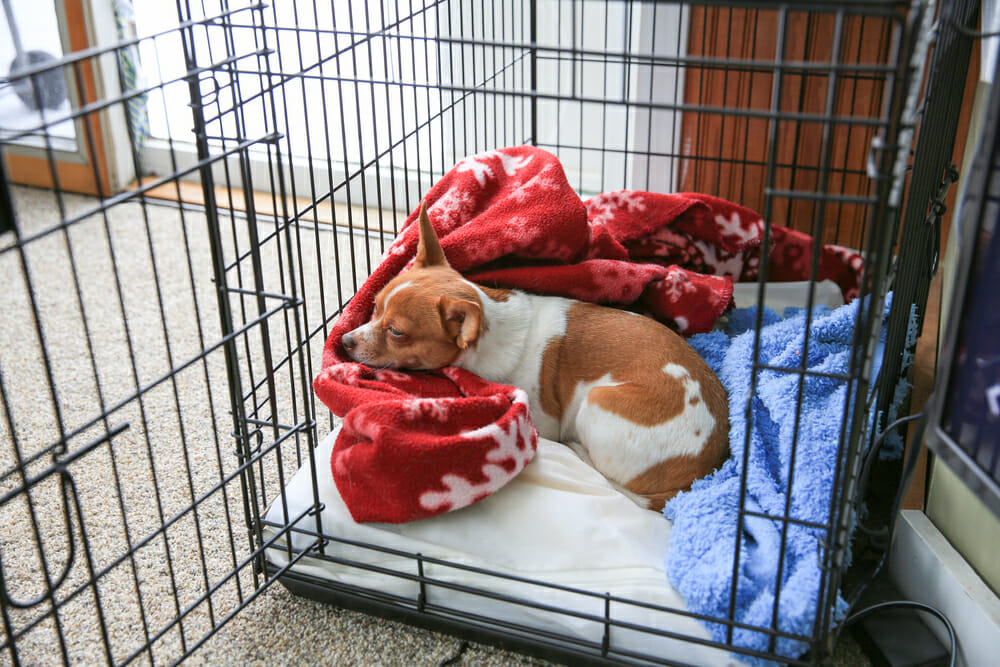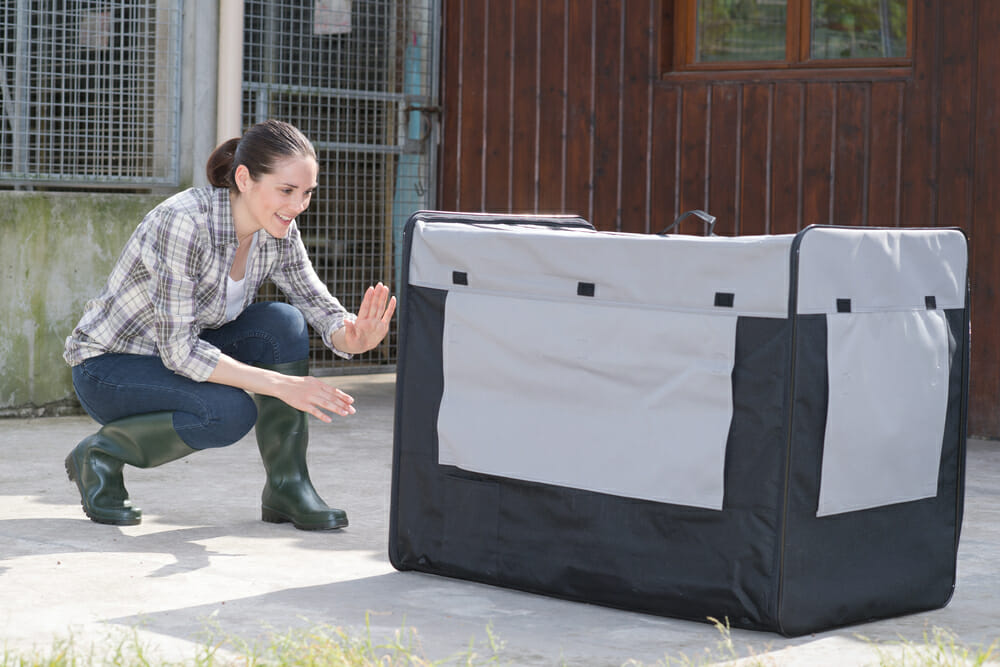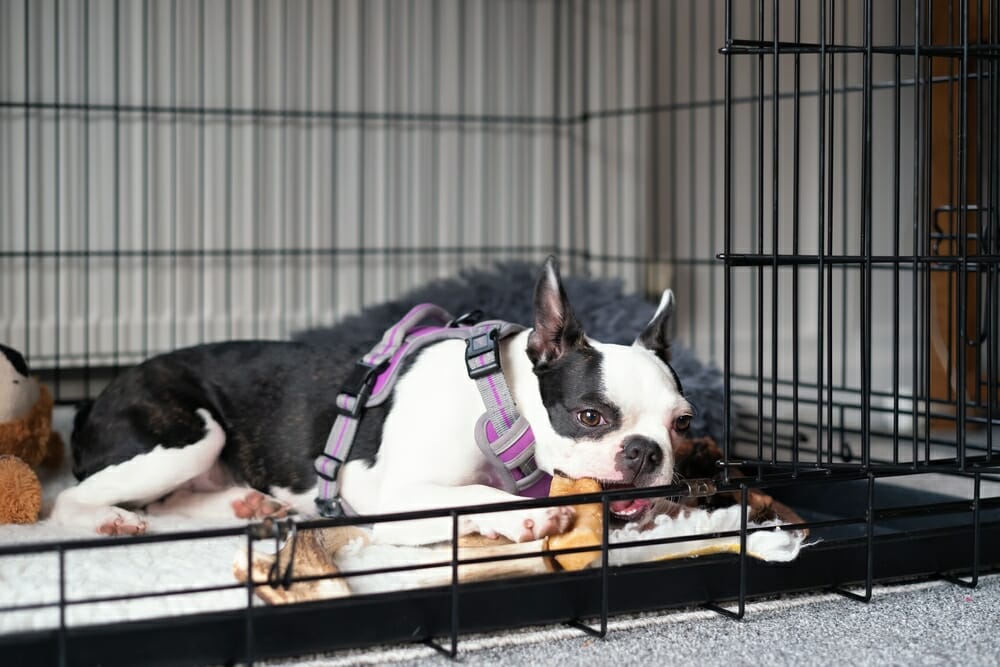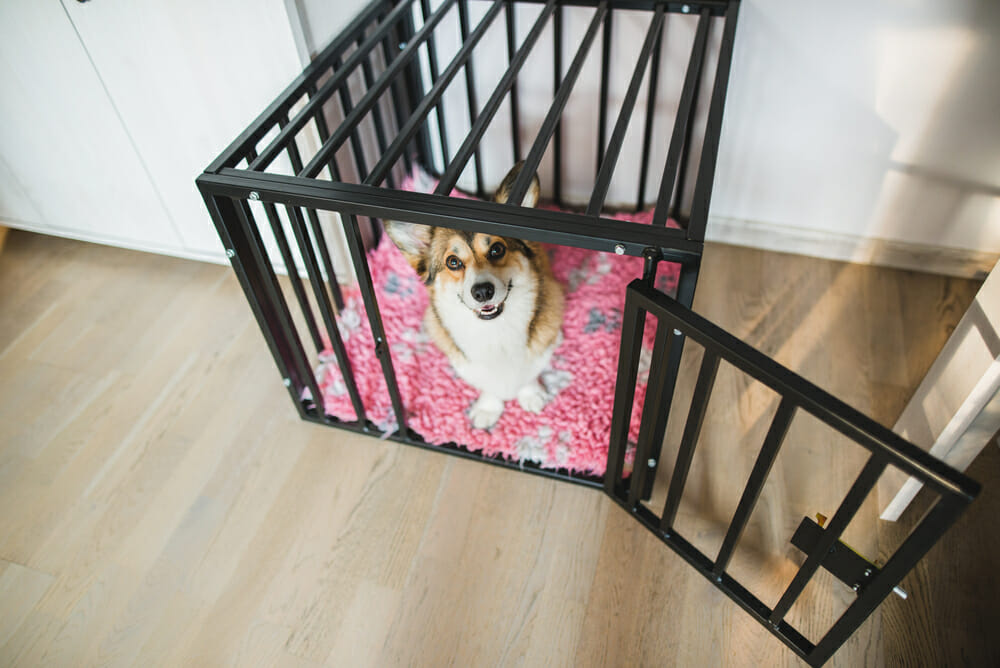With the help of certified trainer, Erika Gonzalez of From Dusk Till Dog, and Robert Haussmann from DogBoyNYC we’re excited to share everything you need to know about crate training your dog.
Should I Crate Train My Dog?
Yes, I recommend that everyone does! Even if you won’t be using a crate regularly, it’s a great thing to get your dog comfortable with. You never know when they’ll be in one, whether that be at a vet or a grooming visit or even for travel!
A Couple Of Things To Note!
1. Your dog should be ‘naked’ in the crate to avoid any issues with their collar getting caught on something. Your dog is already in their safe space so they don’t really need their collar on anyway.
2. Crate size matters! When selecting a crate for your dog they should be able to fully stand up, turn around and lay down. If they can’t do this, then you know it’s too small.

The 4 Part Process To Crate Training
Part 1: Make the crate feel like your pup’s bedroom
The goal of this first (and very important) step is to create a positive association between your pup and their crate. To do this, you’re going to start to feed your dog inside their crate. If you’re training an adult dog who seems hesitant to go in, you can start by feeding them just outside the crate.
If your dog is going in and eating their whole meal, reward them several times when they’re done and still inside the crate. Think of this as their dessert – a nice added bonus! Give these extra treats to your dog in rapid succession so that they want to stay in there for longer.
A little trick that I like to use is getting my pup to find ‘hidden treasure’. Throughout the day, I’ll randomly hide treats inside of my dog’s crate so that when he wanders over and finds it he feels like his crate is a place that he actually wants to check back in.
Part 2: Teaching your dog that staying in their space for a period of time is a great thing

Once you see that part 1 is going well and they are at ease in the crate, you can move on to part 2. At this stage, when your pup goes inside their crate, you can intermittently drop food in there for them. An extended meal toy may come in handy here. As you progress, you’ll want to cut back on how often you’re rewarding them. Ideally, you should practice this for a few minutes a few times a day.
Remember, your dog will always let you know when they’re ready to move ahead. If they ever start to show signs of distress, take a break! The key to part 2 is to never let your dog panic inside of their crate. Instead, watch their body language to understand if they’re comfortable in there for extended periods.
Part 3: Teaching your dog a cue to go inside the crate
The next step is to get your dog into the crate on cue, whether that be by using a verbal cue or a hand signal.
A great way to teach this is by using something I like to call the in-and-out game. To start, you’ll want to put the treat in your fist and point it to the back of the crate, luring your dog in. If you’re doing this correctly, your dog should run into the crate and then you can reward them with that treat. Immediately after, you can say “okay” or a similar word that you want associated with them leaving the crate.
Once your pup masters this, try to remove the treat from your hand and do the same routine by pointing to the back of the crate but this time with an empty fist. Once they come into the crate you can reward them with a treat from your pocket or pouch.
Something to note: Instead of using this hand signal, a lot of people will throw the food into the back of the crate to get their dog in. This is a technique that may be used if your dog is truly having a hard time approaching the crate at all or if they aren’t able to be lured in with food from your hand. If your dog can succeed by tossing food in first, that is a fine place to start. But, ideally you want to be able to use a hand/food lure by pointing in the crate as soon as your dog is comfortable.
Part 4: If you have a dog that likes other things, you can try using other reinforcers for going into the crate (toys, attention, praise)

Although food is typically a primary reinforcer, you can always switch things up and use toys, attention, or praise to reward your dog for going into their crate. There are many ways other than food to show your dog that going into their crate is great! So, feel free to explore your options!
If you have any crate training tips reach out to us at whatthepup@spotandtango.com




















